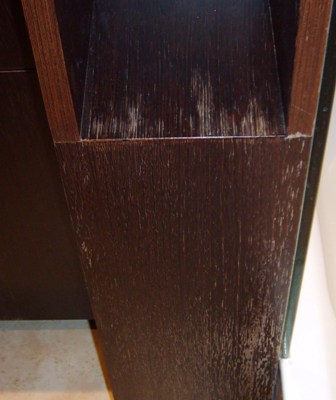Question
It's getting very cold here in Perth, Australia. Our winter this year is bitter - days are around 16c and below. We use Becker Acromer two pac and are doing some high gloss work at present, and time is not on our side. How can I get the warmth up on my work as cheaply as possible? When you do high gloss along with a cut and polish, what tip size do you like to use? At present, we are using standard air type setup and are using a size two tip.
Forum Responses
(Finishing Forum)
I hope you mean -16ºC (3.2ºF) because 16ºC (61ºF) is no where near bitter!
You can build yourself a small (slightly bigger than your project) stick building and line it with insulation. Then put an electric heater in it and leave your project pieces in it to warm up overnight, before you spray.
I have to disagree. Ambient temperatures are definitely more important. While it is nice to have heated coatings, if the temperature of the room is below 60F, then you are going to run into drying issues.
Heating your work area is complicated and specific to your building's parameters. I would consult heating and cooling professionals who know what they are doing.
If you don't have heated return air in your booth, you might try getting an electronic speed controller for your exhaust fan (~$500 US); after you spray, you can lower the fan speed so that just a small amount of cold exhaust air is pulled through to clean out the out gassing solvents. Another thought is to rent booth time from an automobile body repair shop, perhaps over the weekend. They're usually equipped to keep the temps up as required by the catalyzed urethanes they use. Otherwise, you've got to bite the bullet on the heating costs on this one; the last thing you want if you're rubbing this stuff out is to have a compromised film chemistry.
But for a while now (this summer) we have been building up, doing more of our own door work simply by focusing on a painted product more when we close the sale with the customer. We are now in our winter months. The temp, as I said, gets down to around 8-10c in the mornings and up to around 16c midday. The problem is going to be made worse by the fact that we are now starting to do contract work for other kitchen companies and we will have around 6 kitchens a week to do. That's going to be an average of say 30 doors and fronts a kitchen! We are going to need to get a kitchen out a day.
To save on internal space, we have built a spray booth/area outside the back of the main workshop. It's rough but does the job and keeps the workshop dust out of the picture. But it's all tin and gets very cold right now. 30 doors, including large pantry doors, end panels and kick boards, etc. take up a fair bit of space. The idea of having to build another area closed off and heated is not good when it comes to the cost involved, especially after we have just shelled out on a new CNC router and need to get cash in hand built back up.
I need to get my thinking cap on and come up with some clever but cheap ideas on how to do this with as little cost as possible and that keeps as much of the heat in as we can, rather than heating up half of western Australia!
The guns we use are Anest Iwata W 77's, the 2c suction models. They do a fair job and appear to me to be a good all-round gun, but are probably average when it comes to high gloss?
A better finish off the gun provides a better finish before and after polishing with less work and time and that's what we need, hence my question on what you use when it comes to final coat work.
Down the track we may move to an airless or air assist setup, but not for now. Right now we need to make the best with what we have, and that's a damn good compressor and standard suction guns. If changing the tips on one or two is going to help get our gloss work out better and quicker, that would be great.
